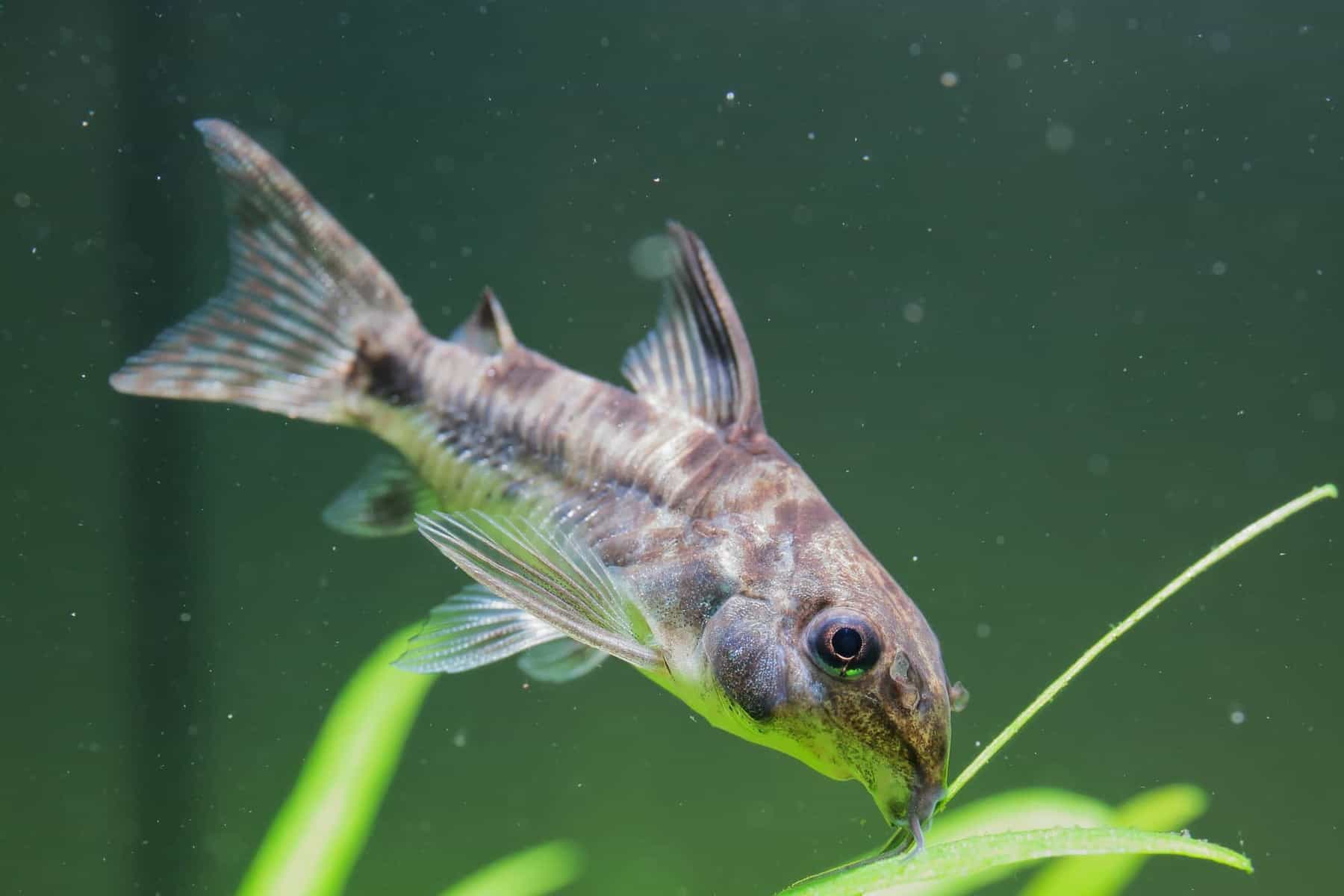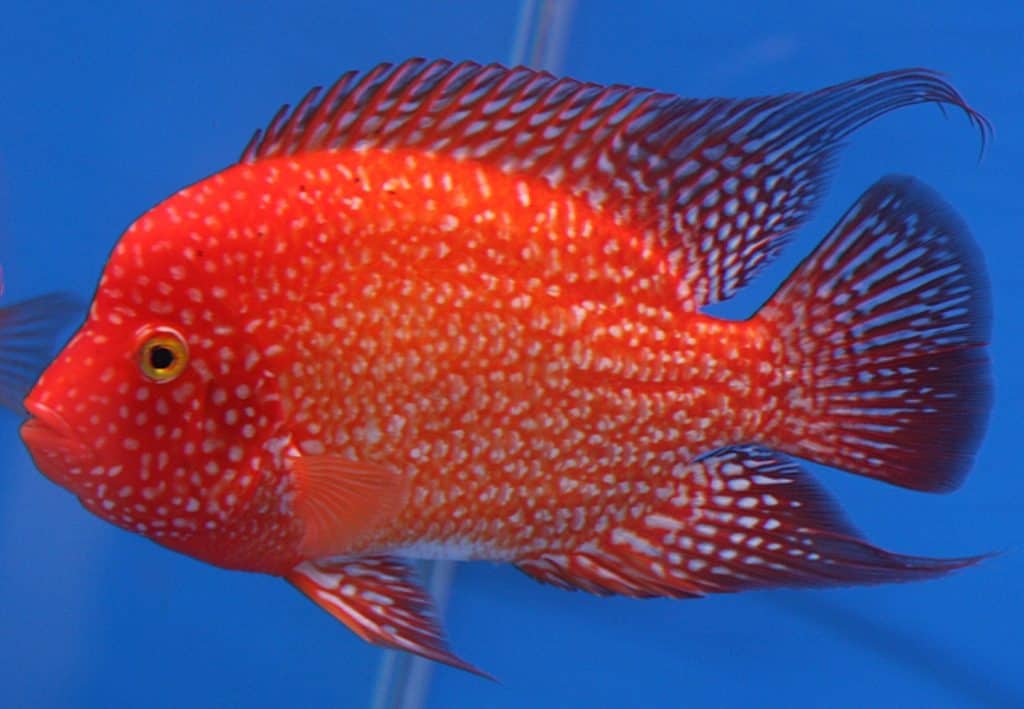
Ultimate Texas Cichlid Care Guide

The Texas Cichlid is a beautiful fish that lives in the waters of Texas and some areas of Mexico. It is becoming more popular in aquariums. While this type of cichlid is fairly common, it needs special care. This care is important for keeping it healthy and happy in a tank.

Read More : https://realacas.com/the-most-aggressive-freshwater-fish/
Understanding the Texas Cichlid
As a fish keeper who likes Texas Cichlids, it’s important to know their special traits. They are beautiful, but there is more to them than looks. You should understand their behavior and needs too.
This guide will give you the information you need. It will cover their natural habitat, what they eat, how to set up their tank, and tips for breeding. Let’s start exploring the world of Texas Cichlids! In addition to understanding Texas Cichlid habitats, it’s essential to consider the specific needs of similar species, such as the Umbee cichlid. For those interested in expanding their aquarium knowledge, be sure to check out some umbee cichlid care tips to ensure a healthy environment. By mastering these elements, you’ll create a thriving aquatic ecosystem that supports the unique behaviors and characteristics of these vibrant fish.
Origins and Natural Habitat
The Texas Cichlid (Herichthys cyanoguttatus) comes from the lower Rio Grande area. It is special because it is the only cichlid native to the United States. While it can also be found in Northern Mexico, most of its population is in the Rio Grande River basin.
You can often find this fish in the main parts of the river, its tributaries, and nearby pools. The Texas Cichlid likes warm, slow waters with lots of plants and places to hide among rocks.
When you set up an aquarium for the Texas Cichlid, remember its natural habitat. Creating a similar environment will help keep them happy and healthy in captivity.
Physical Characteristics and Varieties
Texas Cichlids are known for their beautiful looks. They show a range of colors and patterns. The Herichthys cyanoguttatus is especially notable for its pearly-white body with turquoise and white dots. As they grow older, their colors become brighter, and they often develop black bars on their bodies.
The variety of Texas Cichlids goes beyond just one type. In the aquarium trade, you may see names like the Green Texas Cichlid and the Blue Texas Cichlid.
It’s key to understand that these names do not always mean different species. Many times, they refer to different color forms or hybrids of Herichthys cyanoguttatus. While their care needs are similar, it is important to know their backgrounds to provide the best care and plan for breeding.

Setting Up Your Texas Cichlid Aquarium
Creating a good home for your Texas Cichlid is very important. It helps them live a happy and healthy life. When you make their space like their natural home, they feel safe and calm. This lowers their stress and helps them stay well.
You need to think about tank size, water conditions, substrate, decorations, and the needed tools. Each of these is key to making a space that feels like their real habitat.
Tank Size and Water Conditions
Given their potentially large size and active nature, Texas Cichlids require ample swimming space. For a single adult, a 75-gallon tank is the minimum recommended size. If you plan on housing a pair or including tank mates, a larger tank of at least 125 gallons is necessary.
Maintaining the correct water parameters is crucial for their health. The water temperature should ideally be between 70-75°F. They prefer slightly alkaline water with a pH ranging from 6.5 to 8.0. Regular water changes are a must to maintain water quality and remove accumulated toxins.
| Parameter | Ideal Range |
| Tank Size | 75 gallons (single), 125+ gallons (pair/community) |
| Water Temperature | 70-75°F |
| pH | 6.5-8.0 |
Essential Equipment and Decorations
To keep water quality high, you need some important equipment besides the tank. A strong filtration system is necessary for handling the waste produced by large cichlids. Using a gravel vacuum while changing the water will help remove extra debris from the bottom.
For the bottom layer, fine sand is best because it looks like their natural riverbeds. It also suits Texas Cichlids well since they like to dig and move things around. Stay away from gravel because they may hurt themselves.
When it comes to decorations, they should be strong and placed carefully. This provides hiding spots and helps break up their view of the tank. Good options are rocks, driftwood, and sturdy plants. Avoid using plastic or fragile decorations that could easily break or be knocked over.

Texas Cichlid Diet and Nutrition
To keep your Texas Cichlids healthy and full of life, it’s important to give them a balanced and varied diet. In the wild, these fish eat insects, crustaceans, small fish, and plants because they are opportunistic omnivores.
In captivity, you should try to match this diverse diet. Providing both meaty and plant-based foods is important. This way, they will get all the nutrients they need to grow and feel good.
Feeding Schedule and Diet Types
A healthy diet for Texas Cichlids includes a mix of good pellets or flakes as their main food, along with some treats and fresh food.
Here are some diet ideas:
- Meaty foods: You can give them bloodworms, brine shrimp, krill, or chopped earthworms. Make sure they come from a place without pesticides.
- Pellets: Choose pellets that are made specifically for cichlids and are high in protein. These should provide balanced nutrition.
- Vegetables: You can offer blanched zucchini, peas, and spinach as an occasional treat.
For feeding, adult Texas Cichlids should be fed once or twice a day. Make sure not to overfeed them, as this can lead to obesity. A useful tip is to give them just enough food that they can eat in 2-3 minutes.
Supplements and Treats
A good diet for your fish should include pellets and flakes. It’s also good to give them some treats and supplements sometimes. Live or frozen foods, like brine shrimp and bloodworms, are high in protein. They can help keep your fish healthy and colorful. These foods also encourage your fish to look for their food, which is a natural behavior.
Adding different invertebrates, such as blackworms or daphnia, can help balance their diet. You can also offer small bits of cooked vegetables, like spinach or zucchini, to make it easier for them to digest.
Make sure to check where your live foods come from. It’s best to buy from a good supplier to avoid putting parasites or diseases in your tank.

Behavior and Compatibility
Texas Cichlids are known for being bold and sometimes aggressive. Because of this, you need to be careful when choosing their tank mates. Some Texas Cichlids can be peaceful, but others may show strong territorial behavior as they grow.
To keep a calm and healthy community tank, it is important to understand their social behavior and pick the right tank mates. You should think about the size, personality, and origin of possible companions before adding them to the tank.
Social Behavior and Tank Mates
Texas Cichlids, known for their territorial nature and breeding aggression, thrive when housed in a dedicated tank or with compatible companions. These fish tend to form strong pair bonds and can exhibit hostility towards other tankmates, particularly during the breeding season.
When selecting tank companions for Texas Cichlids, it is essential to choose robust species from Central or South America that are similar in size and behavior. Peaceful or timid fish should be avoided as they may become targets of aggression, leading to stress or injuries. Suitable tank mates for Texas Cichlids include other sizable Central American cichlids, Silver Dollars known for their peaceful demeanor, and Large Plecos that help maintain tank cleanliness by feeding on algae buildup.
Creating a harmonious community within the aquarium involves understanding the compatibility of different species and providing adequate space and hiding spots to reduce potential conflicts. Regular monitoring of behavior and ensuring a well-balanced diet can contribute to a thriving aquatic ecosystem for Texas Cichlids and their tank companions.
Handling Aggression and Territory
Even if you try your best, aggression can still happen, especially during breeding. Male Texas Cichlids are easily recognized by their bigger cranial bump and brighter colors. They can become very protective of their spawning area.
To reduce aggression, it’s good to have a spacious tank with lots of visual barriers. You can use rocks, driftwood, and thick plants. These will break up the lines of sight and create different territories. Watching their behavior closely is important to catch any early signs of conflict.
If aggression continues to be a problem, think about using a tank divider. This can keep the peace without fully separating the fish.

Breeding Texas Cichlids
Breeding Texas Cichlids can be fun and rewarding. However, it’s important to know their needs and behaviors during this time. Both parents work hard to care for their young. They guard their space and look after their eggs and fry.
To breed Texas Cichlids successfully, you need to recognize the signs of breeding. It’s also important to set up the right environment and understand how to take care of the fry. These are key points for success in Texas Cichlid breeding.
Identifying Breeding Conditions
Several signs can show that your Texas Cichlids are ready to breed. You might see more aggression, they may dig more, and often, they clean a spot where they will spawn. This spot is usually a flat rock or flowerpot.
Before they spawn, check that the water conditions are good. It’s also important to give them a mix of high-quality foods to prepare the breeding pair. During this time, the female may become darker in color, and both fish will act more protective of their space.
Texas Cichlids are known as clutch tenders. After the female lays her eggs, both parents will guard and care for them. They protect their territory firmly from anyone who comes near.
Caring for Fry and Juveniles
The fry will hatch a few days after spawning. Both parents will protect them carefully. At first, the fry will eat their yolk sacs. Then, they will start to eat tiny food particles floating in the water.
Once the fry can swim freely, you can feed them baby brine shrimp, crushed flakes, or special fry food from the store. It is very important to change the water often at this stage to keep the water clean and healthy.
Texas Cichlids can have many fry, sometimes more than 100. If you do not want to care for that many, it is better to move some of the fry to a separate tank.





